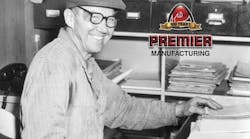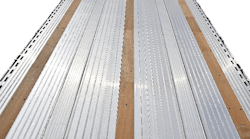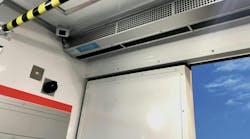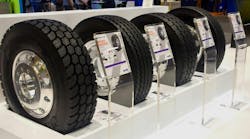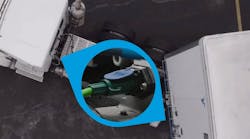THE eCommerce train has left the station. And there’s no stopping it now.
In 2014, $304.1 billion was transacted online, including $31.6 billion in automotive and parts. That number is projected to increase steadily every year, reaching $491.5 billion (and $51.6 billion in auto and parts) in 2018.
“These are gigantic numbers,” said David Seewack, founder/CEO of FinditParts. “When I first started talking about eCommerce business, people were wondering, ‘Will customers adopt eCommerce? Will they buy parts online?’ I think it clearly tells you they are buying parts online. I’m a convert. I’ve decided to do everything I possibly can online. Like you and your children, I have changed the way I buy and acquire products. eCommerce is definitely here to stay, and it’s growing.
In his presentation, “The Evolving Role of eCommerce in the Aftermarket,” Seewack said mCommerce—the mobile version of eCommerce—is a term that’s gaining traction.
“Every one of us is on smartphones all day long, and now we’re starting to buy products,” he said. “We might be on Facebook, see an ad, click on it, and that takes us to a particular website. We look at the product and learn about it, maybe click on reviews, and decide we’re going to shop. So we check the prices.”
After accounting for $95 billion in 2015, mCommerce will also grow steadily to reach $173 billion in 2018.
“For me, I might go to a retail store,” he said. “People are on phones, looking at a part and wondering, ‘Am I going to get a good deal at the store?’ Then they do price comparisons and realize, ‘It’s a lot more money here. I’m going to buy it online.’ So you’re seeing a change in behavior in how all of us are interacting in this world.”
Will it ruin the brick-and-mortar businesses? Seewack says no, because those business arms are actually embracing “click-and-mortar.”
“In reality, it’s an extension to every one of our businesses,” he said.
“People are buying parts online, and they may also visit the physical location to pick it up. It’s important to look at the behavior of customers. We have analytics online that learn the behavior of customers. We learn when they come to look at the part, how many times they come back. It ends up being a central hub for information for all of us.”
What is it going to take to make this transition in the truck and trailer industry?
“In the auto market, you can look up a part by year, make, and model,” he said. “In the heavy-duty industry, that doesn’t exist in the US. OEMs have all the information but we don’t have access to the VIN number. Our counter people need the data and information about your products. The more information is made available, the easier it is for online or in-store transactions. Each one of you needs to recognize that content is king. Look internally and say, ‘Am I providing the best information about my products?’ The better information you provide, the easier it is for the consumer to make an informed decision.”
The required elements:
• Images. “It’s important to do everything you can to collect that information. A lot of companies gather information and provide a catalog, and as they did that they lost that information and may not be able to get that back. It’s so important to create data warehousing to keep all information internally in your business so you can repurpose it and distribute it to other consumers.”
• Technical specifications. ‘It’s important for you to do the best job possible to get that information and provide it electronically. Our counter people use old-school transactions. The better information you provide, the easier it is to look something up.”
• Features and benefits. “If you don’t do it, your competitors will. If a manufacturer has good images and good information and content, they have a much better chance of selling that part than their competitor. A lot of you might be concerned, ‘Well, if I go to the expense of producing product images, somebody may just take them.’ You can prevent them by watermarking it. So don’t be afraid of that information getting out.”
• Categorization.
• Cross references. “A lot of times you might print in a book but not provide it electronically. That cross-referencing information is important for anybody to look up that part.”
• Year, make, model. “The Holy Grail. If you know what vehicle that part is going on and you capture it and catalog it and keep it. People can ultimately use that data to load an electronic catalog to start developing that information. Every day, manufacturers are getting better and better. Wouldn’t it be better to have a digital offering of your information and content as opposed to producing catalogs like we used to? As a distributor, I remember getting cases and cases of catalogs delivered to my door, and they were expecting us to deliver them to customers. A lot of times they just sit. Customers don’t want to fumble through 40 or 50 different catalogs. They would rather have a repository for that information.”
Seewack said that brands that have invested in content have seen:
• Greater than 100% growth in their eCommerce sales year-over-year at FinditParts. “So every time we loaded a new product line, as soon as we had good content and information and images, we sold three times as much as when we didn’t have that. So imagine yourself and you go to a website and it says ‘no image available.’ You’re less likely to buy that part.”
• Increased customer wallet size. “People buy from us and more frequently when they trust that information.”
• Increased customer order frequency.
• Better performance than brands without good content.
No dominant players have emerged in eCommerce, he said, and the opportunity for significant market share still exists.
“It’s something you have to take seriously,” Seewack said. “I think if each one of you dedicates the time and resources and capital necessary, it’s going to pay off immeasurably because eCommerce is here to stay. We’re in the digital age. So make good content and put it on mobile. Provide ways and work with other companies that help you harness and organize that data, because as it is disseminated throughout the chain, it will help you grow your business. It’s a global business. We’ve sold to 150 countries in the last 24 months. So people are coming to our site looking for parts, and they see the images. That content will help you grow your business globally.”
James Chenier,
Vice president of aftermarket sales and marketing for Volvo Trucks NA
Chenier followed with several reasons why parts departments should be involved in e-commerce. Why do it? He listed these reasons:
• Uptime. “One of the interesting outcomes of eCommerce as customers and dealers take hold of it is the impact of uptime—specifically customers being able to look at some information on their own.”
• Earlier repair start and delivery. “We have customers who say, ‘I’m not ready to get there yet.’ But we have these early adopters. And as suppliers, we relish the early adopters. We have dealers who say, ‘I can bring my parts delivery truck in at 6:30 am and I can make my first run faster because I took that order technically when I was closed.’ We can also start earlier in the customers’ shop because of that early delivery.”
• Cost to serve. “How do I manage it? You have retailers doing it all the time—processing part of their sales through an eChannel and lowering their cost.”
• Relieve phone pressure. “We all have locations in metro markets and big truck markets where the phone rings off the hook. This enables us to relieve the phone pressure at the retail outlet and the customer gets information on their own.”
• Price and availability. “Anybody that’s ever worked at a retail dealership knows that parts folks get two questions: price and availability. So setting eCommerce up to be able to give the customer his price and his dealer availability is critical in building a value proposition that’s attractive to the customer.”
• Revenue, margin, ticket average.
He said there are hurdles in overcoming resistance:
• “It will never work in our business.” “It’s the attitude of, ‘Our customers are not ready yet. We’re not teenagers.’ But we’re doing more every day online.”
• Red herring customers. “I had a customer tell me, ‘You’re all wet. I’m never going to do this.’ But all customers aren’t the same.”
• The internet wasn’t built in a day. “We’re still working on the user interface. We’re still working with our network on the next steps in terms of our promotional ability over the web.”
• Pay plans. “There is a potential collision. So counter folks and outside parts and service sales people are compensated in a certain way and you meet resistance at any thought of that apple cart being upset.”
• Fear of technology.
“There are things driving adoption,” he said. “A clear value proposition for all stakeholders and making every stake holder aware is important. There should be goal-setting throughout the value chain. That means as an OEM, we have to get in the boardroom and convince people to invest in the eCommerce platform—what our goals are in terms of uptime, revenue growth, margin growth—and then get to specific objectives: getting into conversion rates and abandon rates and those kinds of things.
“You have to invest in the channel, not just discounting parts. One of the struggles we have managing the channel is that you can come up with a great new product, and it’s really difficult to get the entire value chain down to the customer to understand the value proposition. The eChannel is a very good way of doing that.”
Charley Johnson
CEO at OptiCat LLC
He said OptiCat LLC is a partnership of global suppliers and associations with a simple mandate: help the industry sell more parts by providing outstanding systems and tools that: allow suppliers to take responsibility for their data quality; provide the fastest possible time to market for data; allow outstanding communication with data receivers; and give data receivers the information they need on a “near real-time basis.”
“The good news is that the heavy-duty truck is being populated in the OnLine Parts Research Catalog, as we speak, by manufacturer users of the OptiCat System,” Johnson said. “Frankly, the OnLine Parts Research Catalog for HD is not yet perfect, but we are committed to making it work for you. And it’s time to get your data to market more effectively. In the OptiCat System, suppliers decide who gets their data.”
How the OptiCat System works:
“The supplier tests the data until it’s clean and accurate. An assessment tool allows better communication with data receivers. Run the data through your valid tools until you get the data right. That information can be put into our onboard system, which goes into our data repository. That data repository allows your information to be sent out in forms you want to data receivers in the marketplace. The data receivers have the opportunity to be able to provide custom forms for that data. That information also can go into the online catalog.” ♦
